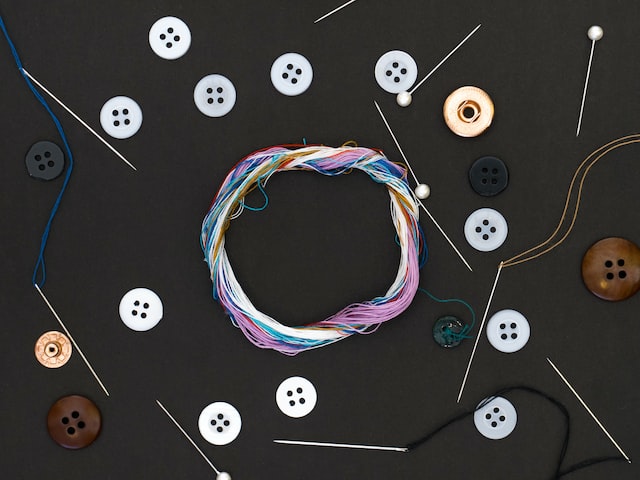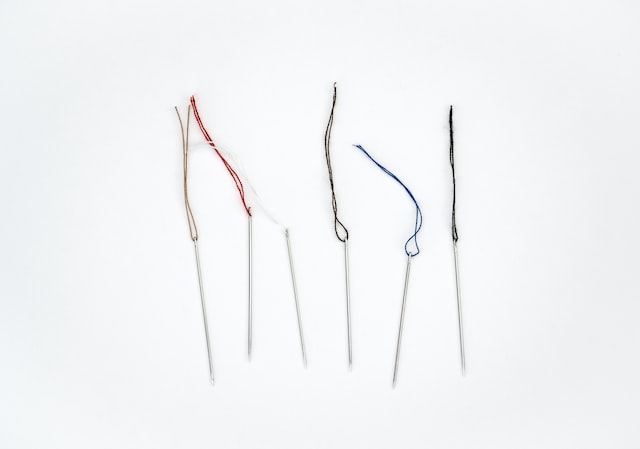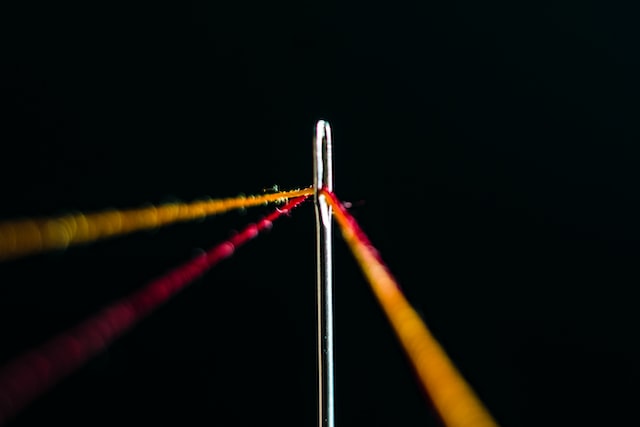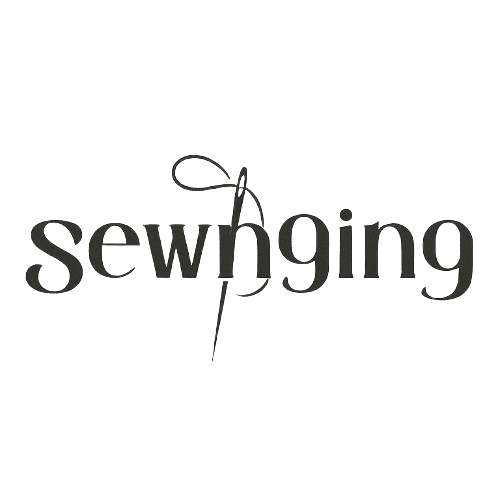Are you tired of being confused about the difference between a sewing needle and an embroidery needle? Look no further! In this blog post, we’ll break down the key differences between these two essential tools so you can get back to your favorite pastime – crafting. Whether you’re a beginner or an experienced sewer, understanding the nuances between these needles is crucial for achieving beautiful results in all your projects. So grab some thread and let’s dive in!
What’s the Difference Between a Sewing Needle and an Embroidery Needle?

When it comes to sewing needles, there are two main types: those for sewing and those for embroidery. Both types of needles have a sharp point and eye, but that’s where the similarities end.
Sewing needles are designed for general stitching on different types of fabric. They come in a variety of sizes and shapes, depending on the type of stitches you want to make.
Embroidery needles, on the other hand, are specifically designed for embroidery work. They have a blunt tip that helps prevent the fabric from being pierced too deeply, which could damage the fabric or cause uneven stitches.
Embroidery needles also have a larger eye than sewing needles, which makes it easier to thread thicker embroidery floss or yarn through the needle.
How to Choose the Right Type of Needle for Your Project

In order to choose the right type of needle for your project, you must first consider the fabric you will be working with. For example, if you are working with a delicate fabric, you will need a needle that is thin and sharp in order to avoid damaging the fabric. On the other hand, if you are working with a thicker fabric, you will need a needle that is strong and sturdy in order to penetrate the fabric.
Once you have considered the fabric you will be working with, you must then decide what type of stitch you would like to use. For instance, if you are looking for a straight stitch, then you will need a needle that has a round point. However, if you are looking for an embroidery stitch, then you will need a needle that has a sharp point.
Finally, once you have considered both the fabric and the type of stitch, you must decide on the size of the needle that is right for your project. Needles come in different sizes ranging from very fine to very thick. The size of the needle you choose should be based on the thickness of the thread you will be using. For example, if you are using a thicker thread, then you will need a larger needle; whereas if you are using a finer thread, then you will need a smaller needle.
Tips for Using a Sewing Needle or Embroidery Needle
There are a few key things to keep in mind when using a sewing needle or embroidery needle. Here are some tips:
1-Choose the right size needle for your project. The wrong size needle can cause problems like skipped stitches or fabric puckering.
2-Be sure to thread the needle correctly. Incorrectly threaded needles can also cause skipped stitches or fabric puckering.
3-Take care when inserting the needle into the fabric. Avoid stabbing the fabric too hard, as this can damage it.
4-When sewing, use a gentle back-and-forth motion. Don’t push or pull the fabric too hard, as this can also damage it.

What are the Different Types of Embroidery Needles?
There are many types of embroidery needles, but the most common are the straight stitch needle, the zigzag needle, and the bayonet needle.
The straight stitch needle is used for most basic stitching and is the most versatile of the three.
The zigzag needle is used for sewing curves and is less likely to break than the straight stitch needle.
The bayonet needle is used for decorative stitches and is very strong and durable.
Which is Better for Beginners, a Sewing Needle or an Embroidery Needle?

If you’re just starting out with sewing, you might be wondering whether you should use a sewing needle or an embroidery needle.
If you’re just starting out with sewing, it might be best to stick with a sewing needle. Once you get more comfortable with the basics of sewing, you can experiment with using an embroidery needle.
How to Use a Sewing Needle
To use a sewing needle, start by threading the needle with thread. Then, hold the needle in your dominant hand and use your other hand to guide the thread through the fabric. Start at the back of the fabric and push the needle through to the front. Continue this process until you reach the end of your seam.
How to use an embroidery needle
To use an embroidery needle, start by threading the needle with your chosen embroidery thread. Then, knot the end of the thread to secure it. Next, position the fabric under the needle and take a few practice stitches to get a feel for how the needle moves through the fabric. Once you’re comfortable, start stitching your design! Remember to take your time and go slowly – rushing will only result in messy stitches.

Do I need to use Embroidery Needles on my Embroidery Machine?
No, there are two types of needles that can be used in an embroidery machine: sewing needles and embroidery needles. Sewing needles are the most common type of needle used in an embroidery machine. They are available in a variety of sizes and can be used for a variety of fabrics. Embroidery needles are designed specifically for use with embroidery machines. They have a larger eye and a sharper point than sewing needles, which makes them ideal for use with thicker threads.
Where can I buy embroidery needles?

There are a few places you can buy embroidery needles. The most common place to find them is at your local craft store. You can also find them online, at sites like Amazon.com.
If you’re looking for a specific type of embroidery needle, it’s best to do a bit of research beforehand so that you know what to look for and where to find it. For example, if you want an embroidery needle with a large eye, you’ll want to look for one that’s specifically designed for that purpose. Otherwise, you may end up with a needle that’s too small or too big for your project.
Once you’ve found the right needle for your project, be sure to read the instructions on the package carefully before using it. This will help ensure that you’re using it correctly and getting the best results possible.
My Recommendation
ORGAN NEEDLES 75/11 Anti-Glue Embroidery x 5 Needles
Organ Needles is proud to offer these high-quality embroidery needles that are perfect for a variety of different projects! These needles are made with a special anti-glue coating that helps prevent the thread from gumming up and ruining your work. They’re also super sharp and easy to use, so you’ll be able to get through your project quickly and efficiently.
Pros:
• High quality needles that won’t get gummed up with glue.
• Strong and durable, so they’ll last a long time.
• Perfect for embroidering any type of fabric.
• A high-quality product at an affordable price.
• Easy to use and care for.
Cons:
• The needles are very sharp, so be careful not to prick yourself while using them.
• They are not suitable for use with delicate fabrics such as silk or satin.
• If you are not careful, the needles can break easily.
Conclusion
Sewing needles and embroidery needles are two different types of needles used in fabric projects. Both can be essential tools for any sewist. Sewing needles are typically used for stitching, while embroidery needles have specialized shapes that make it easier to maneuver around intricate designs and thread multiple colors at once. Knowing the difference between these two types of needles is important to ensure that your projects turn out as desired. Make sure you keep each type handy in your sewing box so you’re ready for any project!


[…] seams. While sewing machines are best for more intricate projects such as quilting or embroidery. Whichever type of stitching you plan on doing, it is important to use the right tool for the job […]
[…] sewing corduroy, it’s important to choose the right needle. A sharp needle is essential for piercing through the fabric without damaging it. A size 90/14 needle is a good […]
[…] will provide you with the necessary tools and techniques to mend any hole with ease. So grab your needle and thread, and let’s get started on mastering the art of repairing holes like a […]
[…] Embroidery sewing is a method of decorating fabric with needle and thread. It can be used to create patterns, embellishments, and logos on clothing, linens, and other fabrics. Embroidery sewing is a centuries-old craft that is still popular today. […]
[…] guide you through how to sew a patch on a hat by hand with just a few simple steps. So grab your needle and thread, it’s time to give your hat the TLC it […]